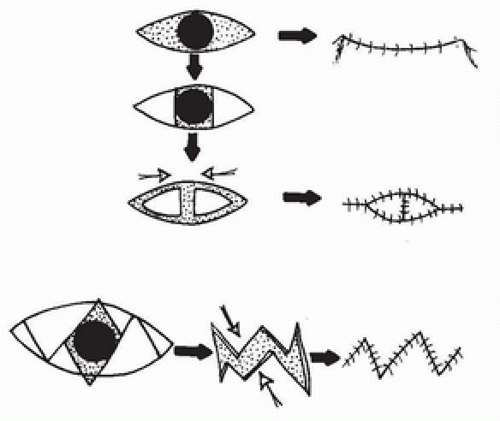Rhomboid-to-W Flap
H. BECKER
The rhomboid-to-W flap eliminates many of the problems associated with other flaps (1, 2, 3). The rhomboid defect is converted into a W-shaped scar, which is easier to conceal in the natural crease lines. It is possible to borrow tissue from all four directions, thereby causing minimal distortion of tissue with no dog-ear formation. A scar that has a W shape is also less likely to develop trapdoor scarring (Fig. 101.1)
INDICATIONS
The rhomboid-to-W technique has been used most successfully for the closure of facial defects. The W-shaped scar is easily concealed, and other problems associated with local flaps are largely overcome. This technique also has been used successfully on the dorsum of the hand, on the digits, and for the closure of small decubitus ulcers.
 FIGURE 101.1 When a circular lesion is excised, the adjacent triangles are normally discarded to avoid dog-ear formation. This tissue can normally be salvaged and advanced as sliding subcutaneous pedicle flaps. However, the resultant scar is not very desirable, and trapdoor scarring is common. With the rhomboid-to-W technique, the tissue of the adjacent triangles is used. By transposing this tissue into the defect, a W-shaped closure is achieved. (From Becker, ref. 3, with permission.) |
FLAP DESIGN AND DIMENSIONS
Stay updated, free articles. Join our Telegram channel

Full access? Get Clinical Tree








